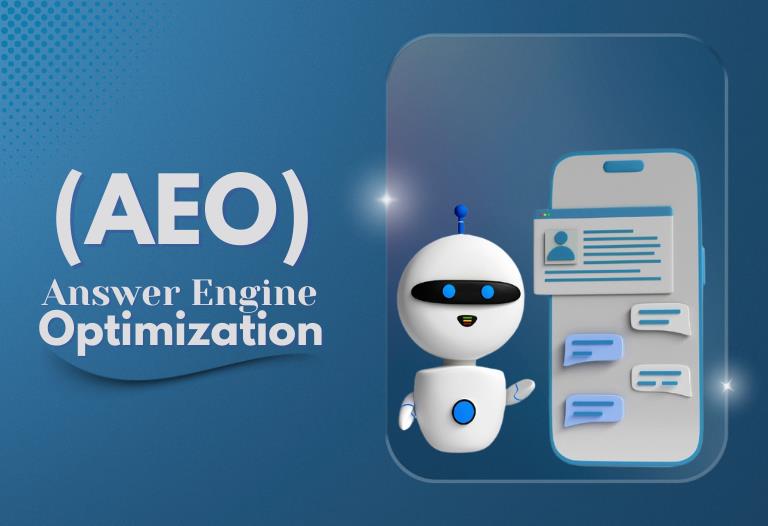
Magento is the most popular e-commerce platforms which is being used by more than 2, 00,000 companies. The success of an e-commerce store depends on many factors which every merchant might not be aware of. Hence, we are sharing a complete checklist to improve your Magento store’s conversions.
Home Page Optimization
1. Bestsellers on Home Page
Generally, most of the visitors land on the home page of your website. Linking your best products on home page can certainly help you improve the conversions. In Magento, setting bestseller products on home page is quite simple. All you have to do is, go to Magento Admin Dashboard > Reports > Products > Bestsellers
2. More Options for Placing Order
It is very much possible that every customer might not like to purchase your products through digital payment options. Often the older people feel reluctant to use such payment options, rather they prefer purchase by phone, mail or fax.
3. Embedding Company Profile Video
These days, video content is more in trend as visual content always grabs the attention of the users. Showing your company, its values, process and team in the video can help you building a trust among the website visitors. There are several tools available in the market which can be used to make an enjoyable video. It is suggested that you embed a video from YouTube or Vimeo instead of keeping on your server as it will increase the load time of your home page.
4. Using Slider
In ecommerce store, discount offers play vital role for increasing the sales of products. However, merely just creating an offer will not serve the purpose. Correct presentation of these offers is also required to increase the reach. Showing latest offers in banners and using those banners on home page slider can have a great impact on your website’s user engagement and conversions.
You can find the free slider banners Magento extensions at: https://www.magentocommerce.com/magento-connect/catalogsearch/result/?id=&s=7&pl=0&eb=0&hp=0&q=slider+banner&t=1&p=1
5. Localizing Your Magento Store
If you target your products internationally, then you need to ensure that customers recognize your website as an international store. For this, you can use IP identification which will redirect the users to a storeview of their language.
For example, if a user siting in France is visiting your website, he will be redirected to www.yourecommercestore.com/fr based on his IP.
From SEO perspective, it is recommended to put hreflang tag for regional URLs. Know more about the regional URL optimization in following video
Product Page Optimization
6. Product’s Images of Good Quality
For any e-commerce store, having high quality product images is pivotal. Product images have a great influence on the visitors buying behavior. It happens many times that a customer likes to buy a product, however, due to poor quality product images, he/she couldn’t make his/her mind to buy it. Hence, the drop-offs occur in the conversion process. Here are some tips in regards to product images:
- Use best image as default image
- Do not use stock images. It is better to use actual pictures of the product
- It would be great if you can show multiple images of the product
- Try to use good looking background for the image. For e.g. if you are selling a refrigerator, then try to use some fresh fruits or vegetables inside. This will give more realistic look to the product.
- Provide zoom in/out feature for the product images
Some free Magento extensions for product images are:
- Retina Product Images: https://www.magentocommerce.com/magento-connect/retina-product-images.html
- Display Bundle Product’s Bundled Items Images: https://www.magentocommerce.com/magento-connect/display-bundle-product-s-bundled-items-images-2.html
- Product Zoom: https://www.magentocommerce.com/magento-connect/product-zoom-2.html
7. Product’s Description
Product’s description is another important section which influences the buyers. Here are the tips for using better description for your products:
- Avoid using standard description provided by the manufacturer. Write unique content for the product pages.
- Mention key features in bullets.
- Use simple and easy to understand language. Avoid using jargons.
- In Magento, you can also add a short description of the product.
8. Product Demo Videos
There are certain products which might not stimulate the buyers via images. For example, video demo of musical instruments, gadgets can certainly make a great impact on your conversions.
Shopify has shared some advantages of using product video. Read at: https://www.shopify.com/blog/4523942-5-reasons-ecommerce-product-videos-will-increase-sales
9. “Out of Stock” Email Alert
If you are showing ‘Out of Stock” products in any category, then it is recommended to add “Out of Stock” email notification like “Notify Me” option. In this way you can inform about the availability of product to the buyer who was interested in it.

10. Product Reviews
Product reviews can have a significant impact on the store’s conversions. Positive reviews about the product can encourage buyers to purchase it. Hence, it is suggested to encourage customers to leave review. Amazon has a great strategy in this aspect.

You can find free and premium review reminder Magento extensions here.
Store Navigation Optimization
11. Structure of Categories
Make sure your category structure is not messy. Your website should be easy to navigate.
12. Highlight Store’s USPs
Highlighting the unique selling points on your store can help you differentiating your e-commerce store from others. So make sure you use some catchy phrases to showcase your USPs.
Search Engine Optimization
13. Meta Tags
Meta tags are the base of on page optimization for any website. Make sure you include meta title and description on all the pages including category and products. If you want to rank in Bing search engine, then do include meta keywords as well. Here are the character limits for meta tags:
- Meta Title: 55-60 characters
- Meta Description: 140-150 characters
14. Alt Tags
E-Commerce store contains several images. Hence, optimizing your images for search engines is must as search engine robots don’t crawl images. Use relevant keyword as an “ALT” tag for the images. For product images, product name can be used as alt tags.
15. Heading Tags
On home page use targeted keywords in h1 tag. For category page, category term and for product page, product name can used under h1 tag. H1 is the title of the page. According to the page’s structure, you can use other heading tags like h2, h3, h4, h5 and h6.
16. Sitemap
Having a XML and HTML sitemap is good for search engines and users as well. XML sitemap helps in improving the search engine indexing while HTML sitemap is good for improving the usability and navigation.
17. Pagination with rel=”next” and no rel=”prev” markup
It is one of the most important aspects that maximum ecommerce website owners ignore. Pagination creates a problem of duplicate content which Google hates. To deal with this problem, you can implement rel=”next” and no rel=”prev” markup on paginated URLs.

Read more on how to implement these tags at: https://support.google.com/webmasters/answer/1663744?hl=en
18. Schema Tags
Adding product schema tags can help you improve the CTR (Click-Through-Rate) of the website. Get complete information on product schema tags at: https://schema.org/Product

You can test your schema markup in Google’s Free Rich Snippet Testing tool.
Checkout Process Optimization
19. Tenacious Shopping Cart System
It happens many times that the customers add products in shopping cart and checkout after few days. Hence, the lifetime of the cookies should be high so that whenever customer returns back, he finds the product in cart.
20. Keep the information on Validation Error
Make sure the information filled by customer stays on validation error as nobody likes to enter the same details again.

21. Keep Less Number of Mandatory (*) fields
Try to keep less number of mandatory fields. It will help in speeding up the checkout process.
22. Use Explanatory Placeholders in Forms
It’s good to show example information in the fields like (Name: Aaron Wallace)

23. Use Explanatory Buttons
The text on the buttons should be easy to understand and should not convey dual meaning to the buyers. Most common buttons for checkout process are:
- Continue Shopping: This is for adding more products in cart
- Continue Checkout: This is for continuing the checkout process and making payment for the order.

24. Guest Checkout
Guest checkout has become so common among ecommerce websites that new ecommerce merchants can consider this functionality as a necessity. Users prefer to buy products as a guest without registration.
25. Avoid Complex Password System
Keep in mind that your store is not customer’s email account. Hence, try to make the password selection easy.
26. Display Validation Errors in Right Way
Some websites show validation errors at the top of the page which users might not see easily and they might leave your website. Hence, highlight the validation errors properly.
27. Set Checkboxes Pre-checked, if possible
You should pay attention to every aspect of checkout process which can save time of the customers. So, try to pre-check common checkboxes such as standard shipping.
28. Follow Structured Checkout Process
The checkout process should be divided into certain steps as it will be easier for customers to fill the details. Also, you can set Goals in Google Analytics for each step and track the customer behavior. In this way you can locate the point of drop-offs and take corrective action for it.
Here are the common steps which you can follow in the checkout process:
Step 1: Registration or guest checkout
Step 2: Adding shipping details
Step 3: Billing information
Step 4: Selecting payment method
Step 5: Making payment
Step 6: Success page with order details
Website Speed Optimization
29. Optimizing Images
Don’t forget to optimize the size of your images. Try gtmetrix.com to test the speed of your website and it will also provide you suggestions to improve the speed. There, you can also get optimized version of images which can help in improving the website’s speed.
Some other tools in market which can be tested are:
- “https://www.imageoptimizer.net/”>https://www.imageoptimizer.net/
- https://www.jpegmini.com/
- “https://jpeg-optimizer.com/”>https://jpeg-optimizer.com/
30. Combining JS and CSS files
If possible, combine the javascript and CSS files to improve the Magento store speed.
31. Use Dedicated Server to Host Your Store
If you are running a giant store or have huge number of products, it is recommended to host your website on dedicated server.
32. Use Magento Extensions
You can also install third party Magento Extensions to speed up your ecommerce store. Here are some good options available that are absolutely free to use:
- GTspeed: https://www.magentocommerce.com/magento-connect/gtspeed.html
- Speedster by Fooman: https://www.magentocommerce.com/magento-connect/speedster-by-fooman.html
- Compressor – minify JS & CSS: https://www.magentocommerce.com/magento-connect/compressor-minify-js-css.html
There many more extensions available which can be downloaded from MagentoConnect.
We hope you will find these tips useful for optimizing your e-commerce store. If you have more tips which can be part of this checklist, please free to add them in comments below!




 June 4, 2015
June 4, 2015









